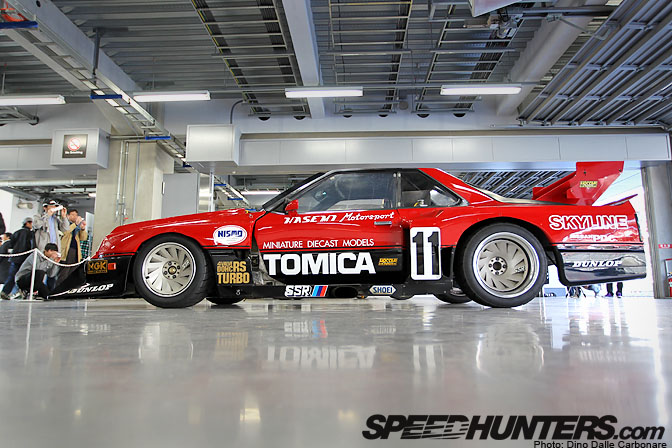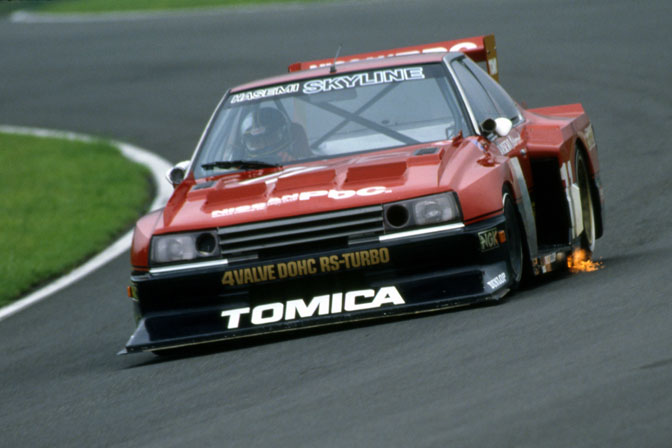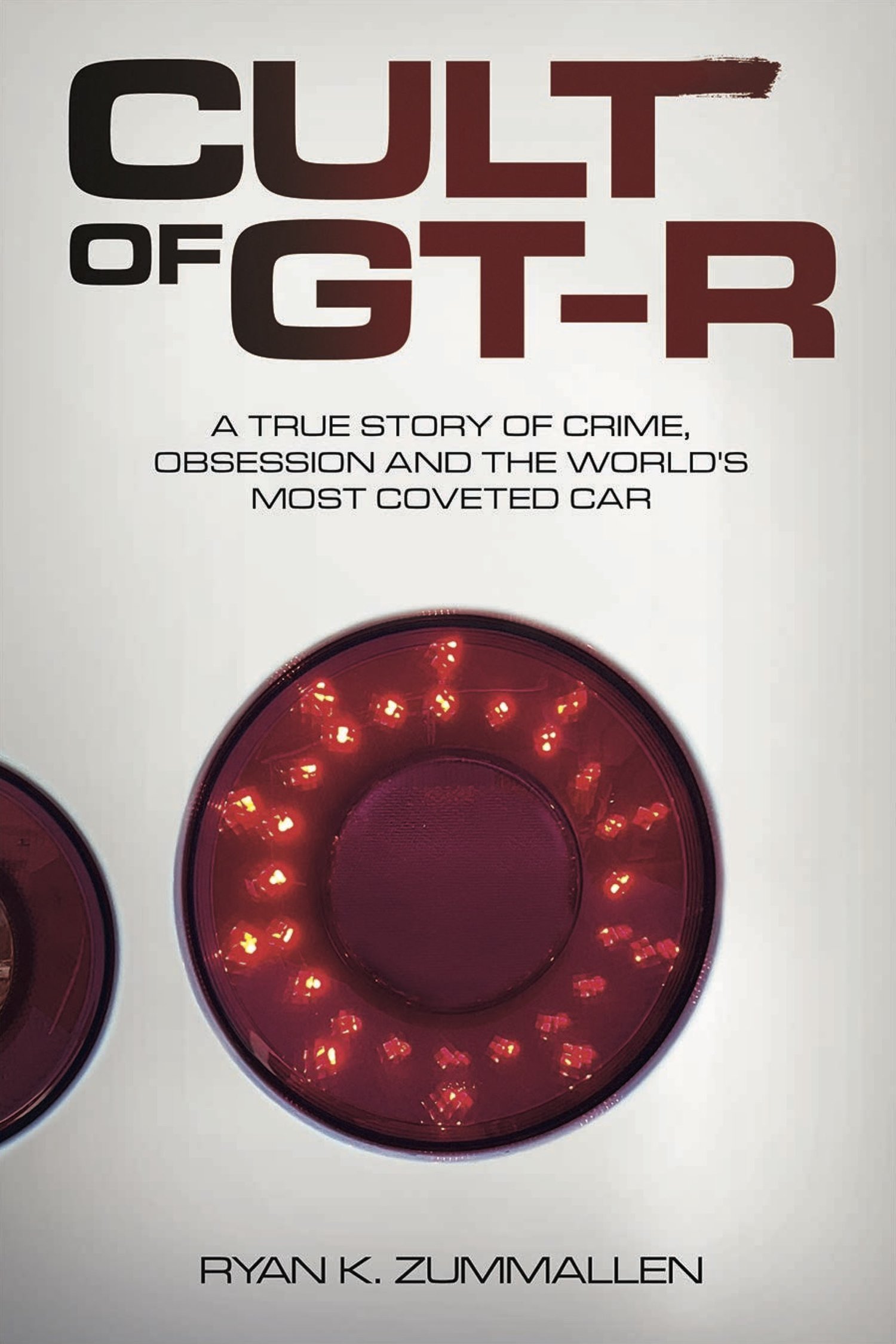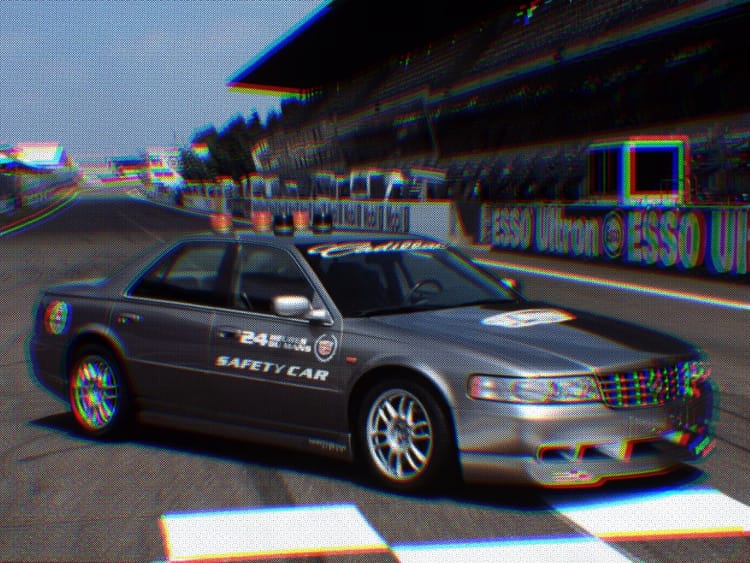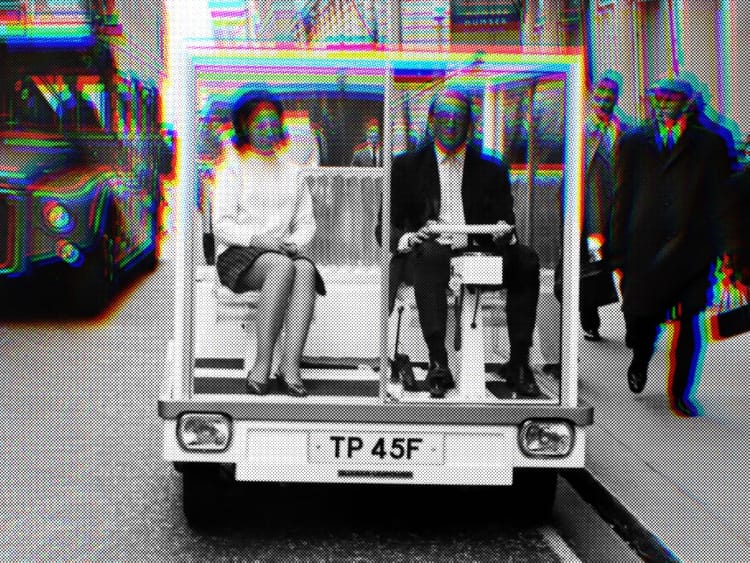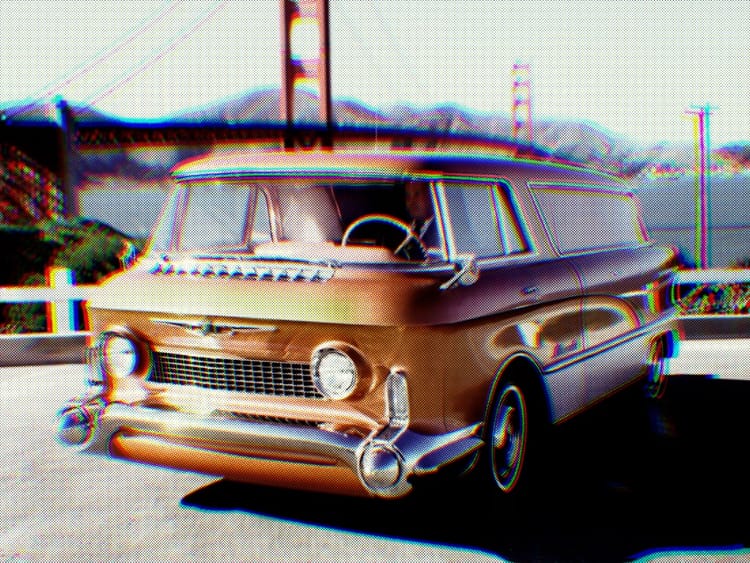Nissan Skyline Super Silhouette
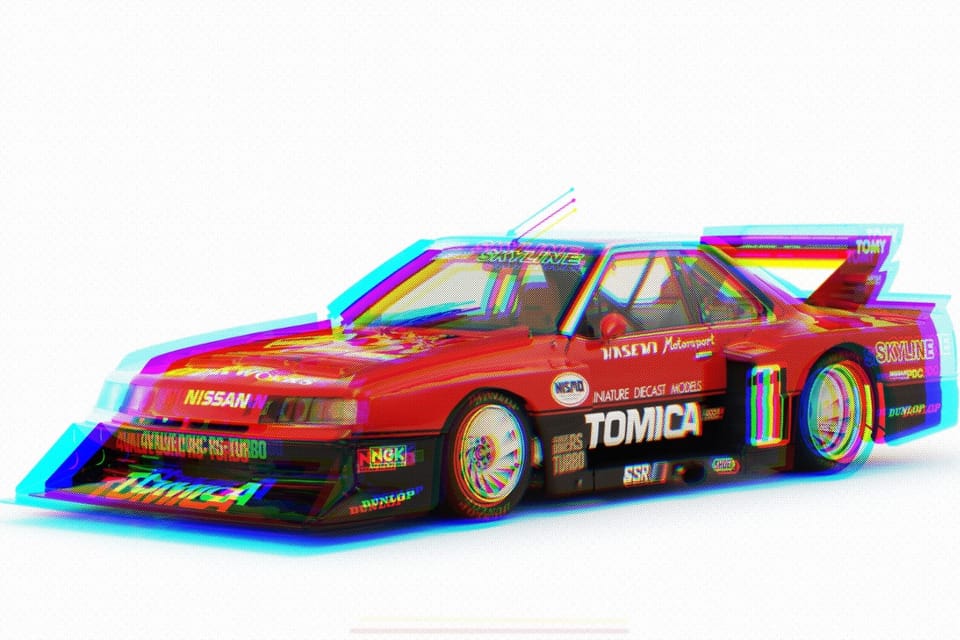
This is one influential, and weird in the sense that it formed a template of sorts for an entire subcategory of tuner and modified car culture.
There are many many photos, illustrations (I have one that I’d bought from a man in a van at Tsukuba Circuit 11 years ago), slot cars, Gran Turismo commentary, and scale models — effigies, sure, but not much useful information.
So let’s start at the top.
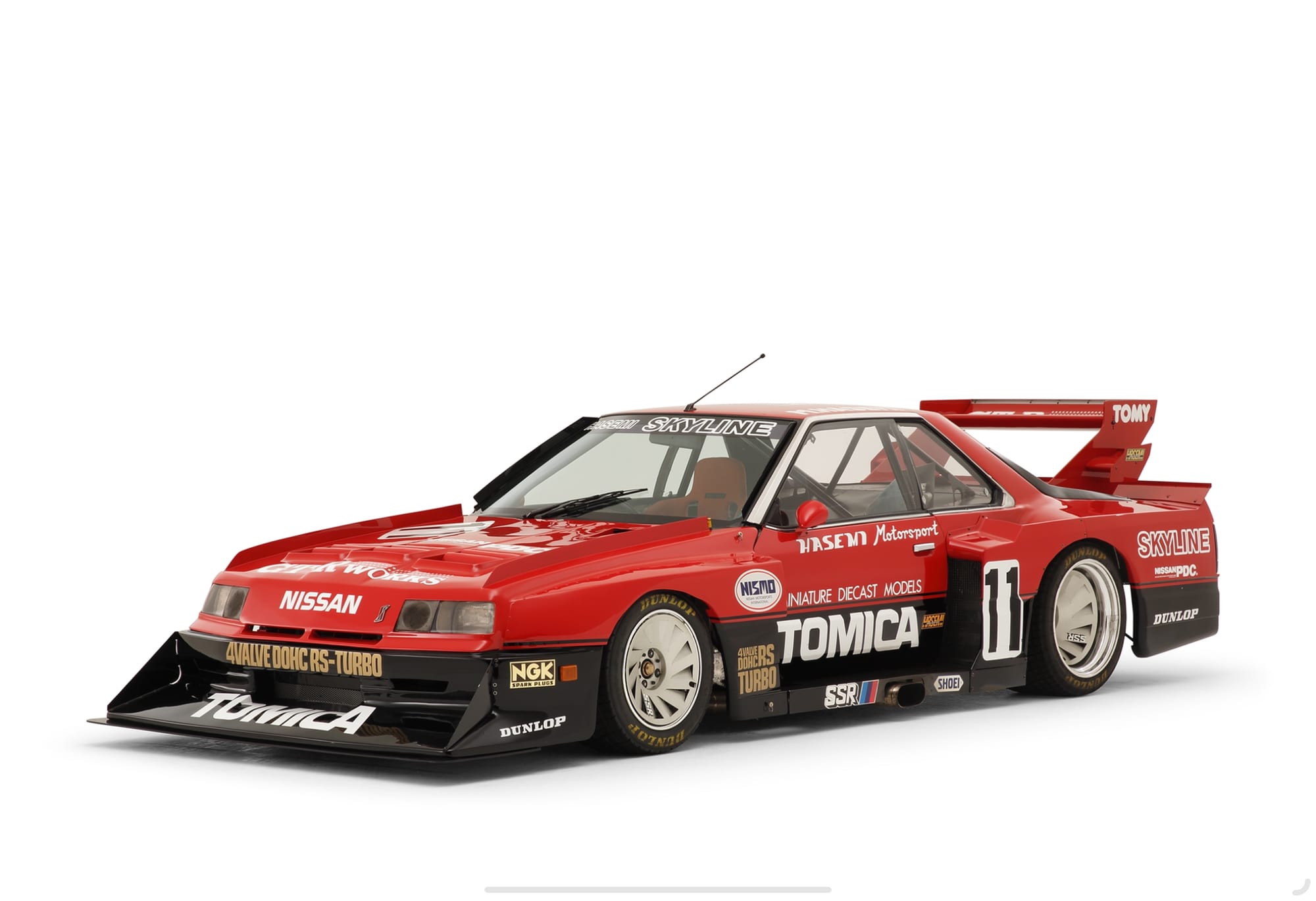
The car you’re looking at, well, the styling cues at least, are from the Nissan Skyline DR30: first of the modern Skylines and the last before its internal code was simplified to the R31, R32, etc. that us car nerds like to use as shorthand.
It’s helpful to know that back in the day, the Skyline was an entire range of vehicles, from station wagon to coupe, with a number of different engines (4- or 6-cylinder) — sort of like the BMW 5 Series range. There was something for everyone.
Even now, the Skyline name lives on as a nameplate attached to whatever platform Nissan pleases; the top-range GT-R is now its own ’thing’. When launched in 1981, popularity of the Skyline was waning through the last few generations, and Nissan (along with every other Japanese automaker) had decided that technology and — maybe unintentionally — marketing were going to save the day.
We may laugh about ridiculous tie-ups, but Paul Newman was the face of marketing for the car.
People still call it the New-man Skyline. (But if you’re really nerdy, it’s the Iron Mask Skyline, thanks to some models’ grille-less front fascia.)
Nissan wasn’t shy about the car’s on-track performance, either, with heavy promotion of this particular car. Based around FIA’s international Group 5 regulations outlining rules for “Special Production Cars,” the last of four Group 5 rule sets started in 1976 and ran until 1982.
If you’re into cars that look like this, a number of manufacturers from around the world produced race cars for Group 5, including Porsche — this is why the "slant nose" 911 (935) came into being; Porsche found a loophole that allowed it to ditch the round headlights for something more aerodynamic.
The thumbnail shows the later — don’t be confused — Nissan Skyline Turbo C, however the earlier Super Silhouette is heavily featured


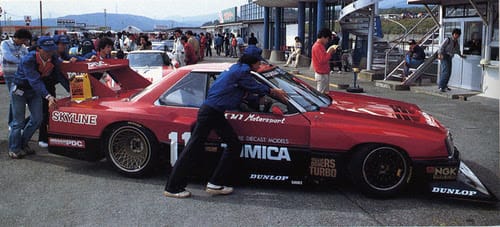
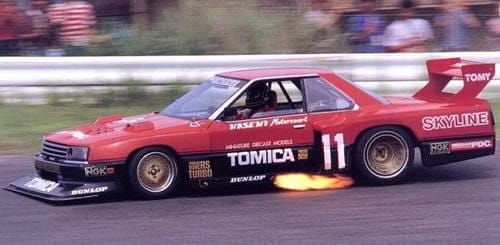
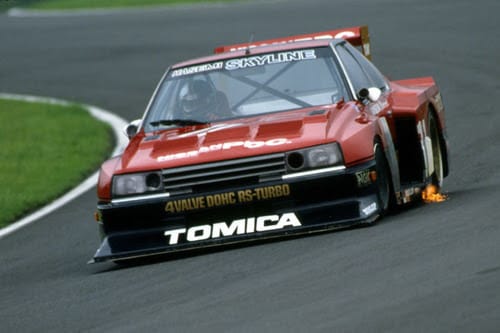

I feel as though the lower-res pictures help the vibe here, no? • Nissan, source unknown
Box flares for everyone, including but not limited to: the BMW 320i Turbo, Toyota Celica, Mazda RX-7, BMW 3.0 CSL, BMW M1, Lancia Stratos Turbo, Lancia Beta Montecarlo Turbo, Ferrari 512BB LM, Zakspeed Ford Capri Turbo, and the Greenwood ‘Widebody’ Corvette.
To think that all of these distinct cars were designed to a single rule set (and theoretically could have been competitive with each other) makes me hope that Goodwood will get them all together one year.
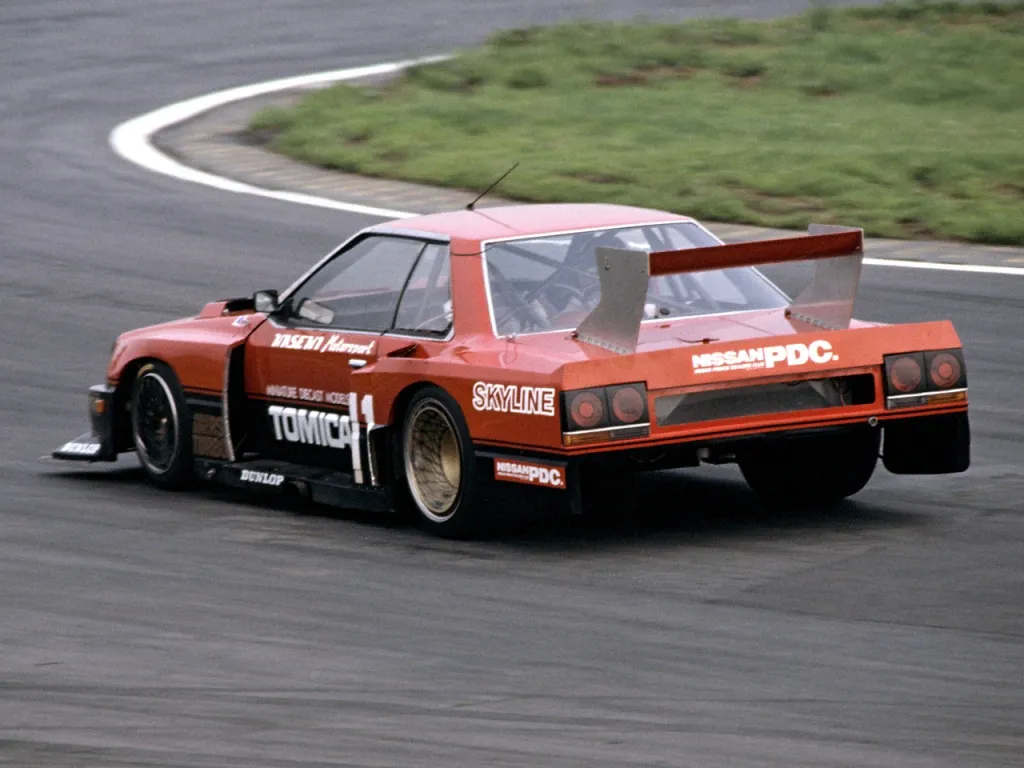
Anyway, before ‘Balance of Power’ calculations came into effect for top level series that chose to balance competitors by tweaking power, weight, and/or top speed, the rules for most Group 5 series were essentially: Don’t modify the width of the car, and don’t change the hood, roof, doors, or rain gutters.
The FIA said nothing about the bumpers, rear spoiler, or fenders: and that’s how box fenders grew to extravagant sizes as they covered wider wheels and more complex aerodynamics.
Designer? The under-the-radar genius, and certified weird car spawner, Takuya Yura of Mooncraft.
The R30 was a successful race car even without the extreme body and engine modifications, particularly in Australian touring car competition. But for Group 5 regulations, Nissan pulled out all the stops:
- Curb weight: 1,005kg
- Engine: 2,082cc DOHC inline 4-cylinder with more than 570 horsepower
- Transmission: Doug Nash 5-speed, triple plate clutch
- Brakes: Lockheed 4-pot calipers
- Tire size (front, rear): 270/590-16, 350/700-19 (!!)
- Body: Steel tubular frame, aluminum structure (the "car" part), fibreglass body panels
The Super Silhouette series in 1982 and 1983 was run as a support series for the then-top open wheel formula in Japan: and Nissan really, really wanted to win. And it did, with Masahiro Hasemi claiming most of the car’s seven victories between those years.
Even now, Nissan brings it out for historic events, a retired hero who will delight fans well into the future with its perfect blend of flares and flames.
Additional sources

